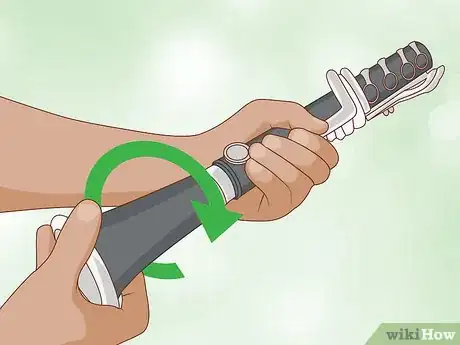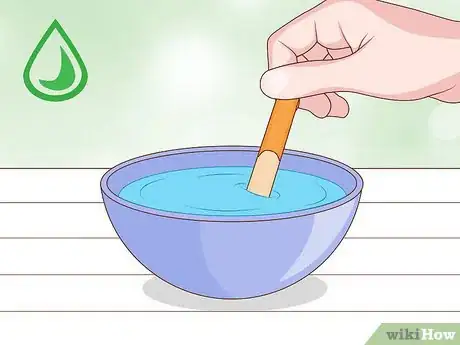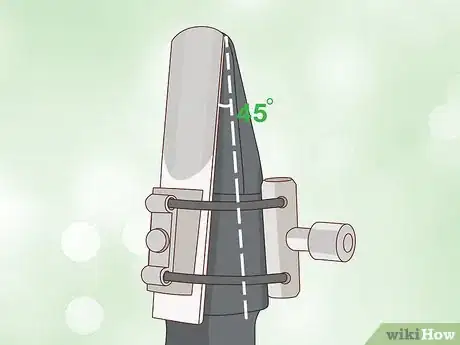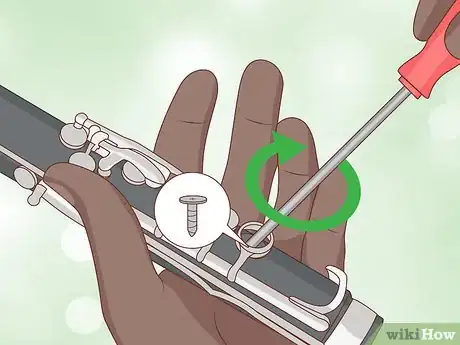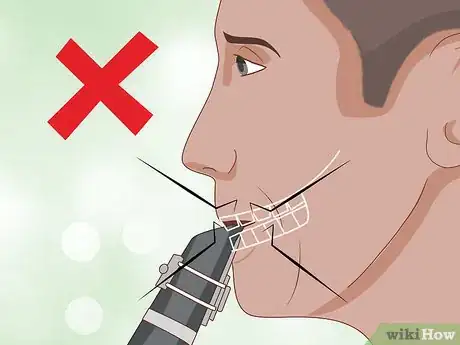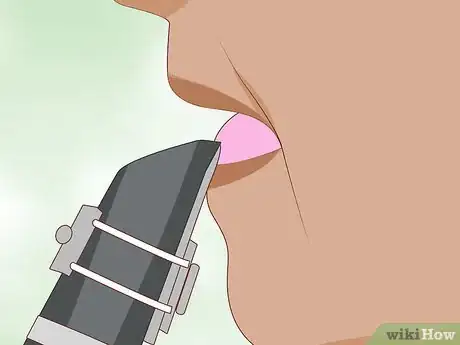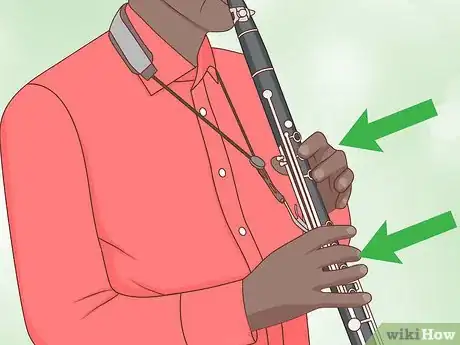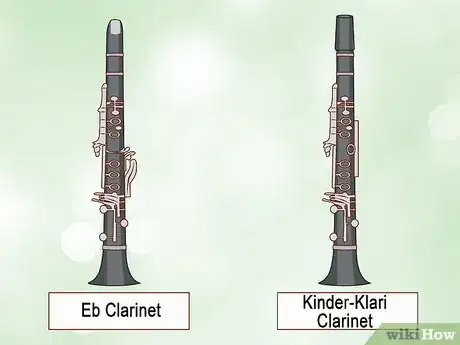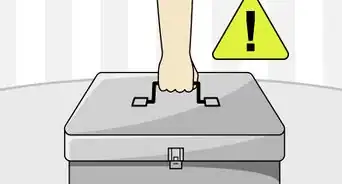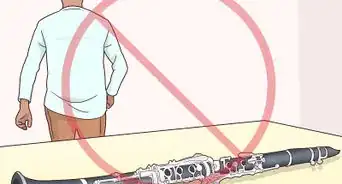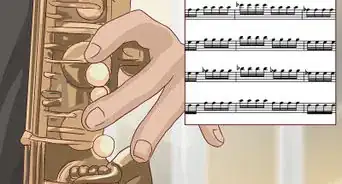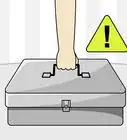This article was co-authored by wikiHow Staff. Our trained team of editors and researchers validate articles for accuracy and comprehensiveness. wikiHow's Content Management Team carefully monitors the work from our editorial staff to ensure that each article is backed by trusted research and meets our high quality standards.
There are 8 references cited in this article, which can be found at the bottom of the page.
wikiHow marks an article as reader-approved once it receives enough positive feedback. In this case, several readers have written to tell us that this article was helpful to them, earning it our reader-approved status.
This article has been viewed 139,311 times.
Learn more...
While the clarinet is a wonderful, beautiful instrument, it's a fact of life that it will occasionally make an obnoxious squeaking noise for what seems like no reason. However, if you've been squeaking more than "occasionally", you may have a problem. It could be caused by any number of things, but the problem is likely fixed more easily than you'd think. You can start with easy troubleshooting methods, or seek more professional help if nothing seems to work. Soon, you’ll be an expert on how to keep your clarinet sounding beautiful.
Steps
Checking Out Your Clarinet
-
1Make sure that your clarinet is put together correctly. Depending on the type of clarinet you play, there are usually several sections that connect together with cork tenons. You should ensure that mouthpiece, barrel, upper and lower joints, and bell fit together properly.[1]
- If you are a new player, make sure that the upper and lower joints are situated properly for your hands. The upper joint is for your left and should be on your left side, and vice versa with your right hand and your lower joint.[2]
-
2Check if your reed is moist. A dry reed could be the culprit in your clarinet squeaking. Your reed should be firm, but not hard as a rock. If your reed is new, it might need some extra time soaking in water to get the proper amount of moisture.
- Your reed also needs to be kept at the right moisture level so it is easy to work with. Keep it in a special box that controls environmental changes.[3]
Advertisement -
3Place your reed in the mouthpiece at a 45-degree angle. Only a narrow opening should remain between the reed itself and the mouthpiece to make the best sound possible. Ask your instructor if you are having trouble, or if you are not sure if the angle is correct. This can be a lesson of trial and error.[4]
-
4Examine your clarinet for loose screws. Even the smallest of screws can hinder your playing ability. Some are hard to see, so do a thorough visual examination to determine any culprits.[5]
- If you do detect a loose screw, find a screwdriver that fits and screw it back in. Be very careful that you do not strip the screw. If you cannot find a properly fitting screwdriver, you may need to visit your local music store.
Evaluating Your Form
-
1Make sure you are not biting down on the mouthpiece. You may be clamping down too hard with your top teeth, biting into the reed with your bottom teeth, or just applying too much pressure overall, which isn’t good for your teeth or the reed. Try to loosen up a bit and relax your neck and jaw.[6]
-
2Avoid putting too much or too little of your mouth on the mouthpiece. You may not be taking in enough mouthpiece (thus not giving the reed enough room to vibrate), or you may be taking in too much. Adjust your mouth until you hear an improvement. You should also make sure your mouth is forming an airtight “pouch” around the mouthpiece.[7]
-
3Practice good tongue placement, or "tonguing." Wrong tonguing techniques can put too much pressure on the reed and cut off the airflow unevenly for too long, which can cause squeaks. Place the top of your tongue tip at the very tip of the reed, and practice this technique to see improvements.[8]
-
4
-
5Experiment with hand positioning. Hand position can be a common issue if your fingers are small, or if you are a new player. Your fingers may not be large enough to cover the tone holes, they may not be able to support the weight of the instrument, or they might still be learning proper finger coordination.
- If you are a young child working with a bulky clarinet, consider Investing in a neck strap. A neck strap can transfer the instrument's weight off of the arms and onto the neck. This can allow you to relax and focus on practicing.
-
6Research smaller clarinets. If your fingers are still too thin or too short, consider purchasing a smaller clarinet. Some varieties of small clarinets include the Eb clarinet and the Kinder-Klari clarinet.[10] Some brands also sell clarinets with plateau-style keys so that even small fingers can close them.[11]
Community Q&A
-
QuestionWhy can some of my reeds can make a better sound than other reeds?
 Community AnswerSome reeds can make a better sound than others because of different strengths/thicknesses.
Community AnswerSome reeds can make a better sound than others because of different strengths/thicknesses. -
QuestionWhy do I squeak when producing loud sounds?
 Community AnswerUsually this means that you're blowing too hard into the clarinet, so try to relax your breathing. If the squeaking persists, the issue might be with the instrument.
Community AnswerUsually this means that you're blowing too hard into the clarinet, so try to relax your breathing. If the squeaking persists, the issue might be with the instrument. -
QuestionWhy do the notes squeak more in the morning? My playing seems much more accurate in the afternoon.
 Ben WandellCommunity AnswerThis might have to do with the weather or humidity in the mornings and afternoons. This is specially the case with wooden clarinets because they require a certain temperature for them to sound pretty.
Ben WandellCommunity AnswerThis might have to do with the weather or humidity in the mornings and afternoons. This is specially the case with wooden clarinets because they require a certain temperature for them to sound pretty.
Warnings
- Even if a mechanical problem with the clarinet looks "easy" to fix, don't attempt to repair it unless you know what you're doing! You could easily turn a loose screw into a need for a whole new instrument. Most music stores with a qualified repair tech on premises can analyze the problem quickly and estimate the cost to help you.⧼thumbs_response⧽
References
- ↑ http://www.the-clarinets.net/english/clarinet-instrument.html
- ↑ http://www.the-clarinets.net/english/clarinet-instrument.html
- ↑ http://www.the-clarinets.net/english/clarinet-reed.html
- ↑ http://www.the-clarinets.net/english/clarinet-reed.html
- ↑ http://www.the-clarinets.net/english/clarinet-how-to-fix.html
- ↑ http://www.clarinet-now.com/poor-clarinet-embouchure.html
- ↑ http://www.clarinet-now.com/poor-clarinet-embouchure.html
- ↑ https://clarinet.music.unt.edu/sites/default/files/tipsForTonguing.pdf
- ↑ http://www.clarinet-now.com/clarinet-embouchure.html
